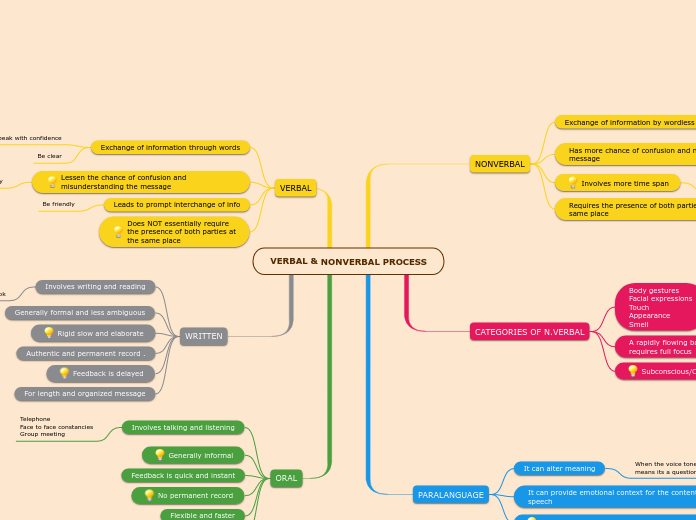VERBAL & NONVERBAL PROCESS
NONVERBAL
Exchange of information by wordless cues
Facial expression
Body gestures
Appearance
Has more chance of confusion and misunderstanding the message
Paralanguage
Expressing emotional feelings
Involves more time span
Creating impressions
Carries critical meaning
Requires the presence of both parties at the same place
Managing intercation
CATEGORIES OF N.VERBAL
Body gestures
Facial expressions
Touch
Appearance
Smell
A rapidly flowing back and forth process that requires full focus
Subconscious/Contextual/Ambigous/Cultural
PARALANGUAGE
It can alter meaning
When the voice tone increases at the end of a sentence it means its a question.
It can provide emotional context for the content of speech
A loud high pitch voice tone can express anger, excitement or fear.
Can show membership in a linguistic subgroup
VERBAL
Exchange of information through words
Speak with confidence
Be clear
Lessen the chance of confusion and misunderstanding the message
Practice humility
Leads to prompt interchange of info
Be friendly
Does NOT essentially require the presence of both parties at the same place
WRITTEN
Involves writing and reading
Memos
Letters
Handbook
Generally formal and less ambiguous
Rigid slow and elaborate
Authentic and permanent record .
Feedback is delayed
For length and organized message
ORAL
Involves talking and listening
Telephone
Face to face constancies
Group meeting
Generally informal
Feedback is quick and instant
No permanent record
Flexible and faster
Suitable for short message
